“Raw feeding will make pets bloodthirsty and aggressive” is a common myth associated with feeding dogs and cats a raw diet. This misconception often scares many pet parents away from raw feeding, which is a very natural reaction! No one wants their pet to become aggressive towards themselves, their family, friends, or other animals. However, a complete and balanced raw diet will NOT cause aggression in dogs or cats.
Raw feeding as a whole will not make a dog or cat aggressive, but there are additional factors that should be taken into consideration when discussing aggression and raw diets:
Medical Conditions
Aggression can sometimes be a symptom of a medical condition. Therefore, all pets exhibiting sudden aggression should be examined by a veterinarian.
Nutritional Deficiencies
A diet lacking in essential amino acids can cause dietary-induced aggression.
Behavioral Problems
Raw food is inherently high value to pets. Therefore, some pets may feel the need to protect their food resources.
Once these additional variables are identified, it helps provide a clear picture of aggression and raw diets.
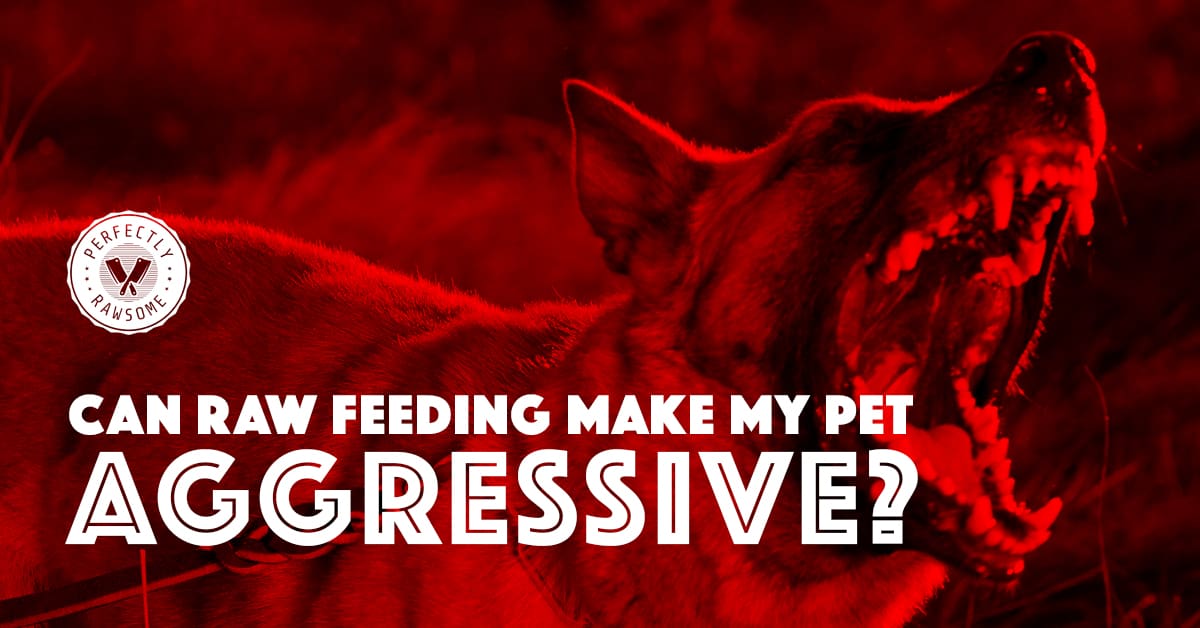
Medical Condition
The first course of action to take when a pet is displaying aggression is to rule out medical conditions. Many medical conditions could cause a behavior change in dogs and cats, such as:
Acute or Chronic Pain
Hypothyroidism
Seizures
Neurological Disorders
Always Seek Veterinary Assistance
When a pet suddenly begins to display aggression, it is highly recommended to have a full veterinary exam. It's important to rule out a possible medical condition that could be causing the aggressive behavior before pursuing other avenues. Ensuring the dog or cat is physically healthy is step number one!
Tryptophan Deficiency
Dogs and cats have recommended allowances for essential amino acids to support healthy biological functions. This amino acid must be supplied daily in sufficient amounts via the diet. This is because the body is unable to synthesize tryptophan and does not store any excess from food.
Excess protein and amino acids are utilized for energy, and these excess calories are stored in the body as fat. Therefore, excess amino acids do not accumulate within the body as fat-soluble vitamins or minerals do.
Diets low in tryptophan have been clinically shown to cause depression, anxiety, and aggression. If a raw diet does not supply sufficient amounts of the essential amino acid tryptophan daily, aggressive behaviors can begin to display. However, this can easily be corrected by ensuring the diet supplies sufficient amounts of the tryptophan amino acid.
Recommended Allowances for Tryptophan
Tryptophan is an amino acid needed for normal growth and nitrogen balance for adult maintenance. The body uses tryptophan to synthesize niacin, melatonin, and serotonin.
Niacin (Vitamin B3)
Niacin is one of the eight essential B vitamins. It plays a role in converting food to energy, maintaining healthy skin, and nerve function.
Melatonin
Melatonin is a hormone that regulates the sleep and wake cycle.
Serotonin
Serotonin is a monoamine neurotransmitter that has a wide variety of functions in the body. It is called the “happy chemical” because it contributes to wellbeing and happiness.
Adult Dogs
0.28g minimum allowance
0.35g recommended allowance
Puppies
0.45g minimum allowance
0.58g recommended allowance
Adult Cats
Minimum not available
0.33g recommended allowance
Kittens
0.33g minimum allowance
0.40g recommended allowance
4.25g maximum allowance
Foods High in Tryptophan
Tryptophan is an amino acid found abundantly in lean muscle meat. A raw diet can be naturally abundant in tryptophan if the appropriate ingredients are fed. Below are some examples of raw foods that supply the highest amount of tryptophan per ounce (28 grams).
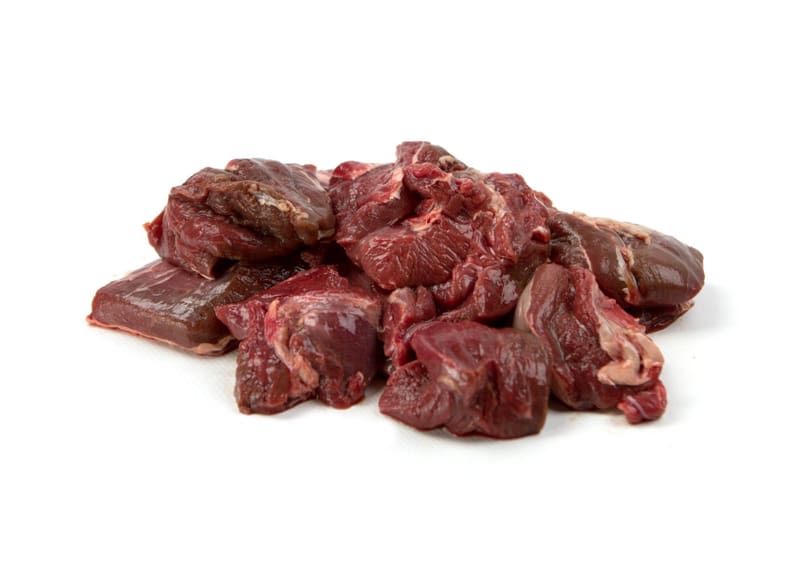
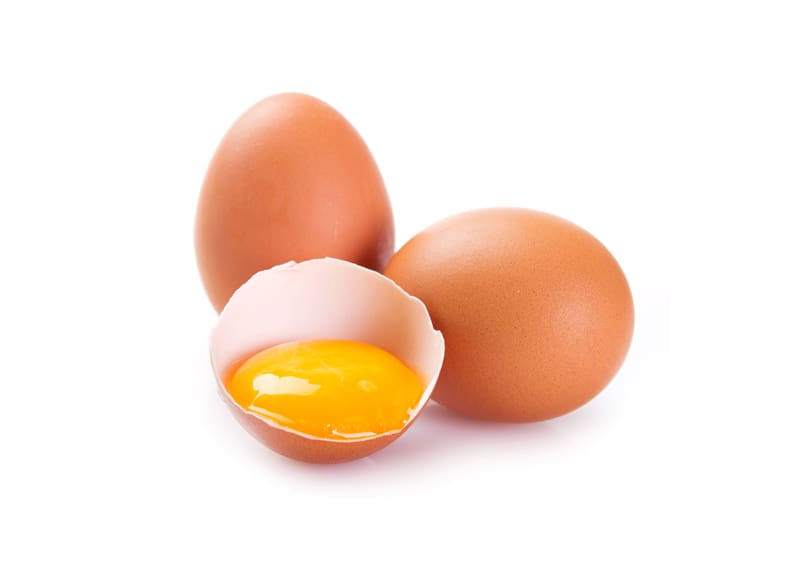

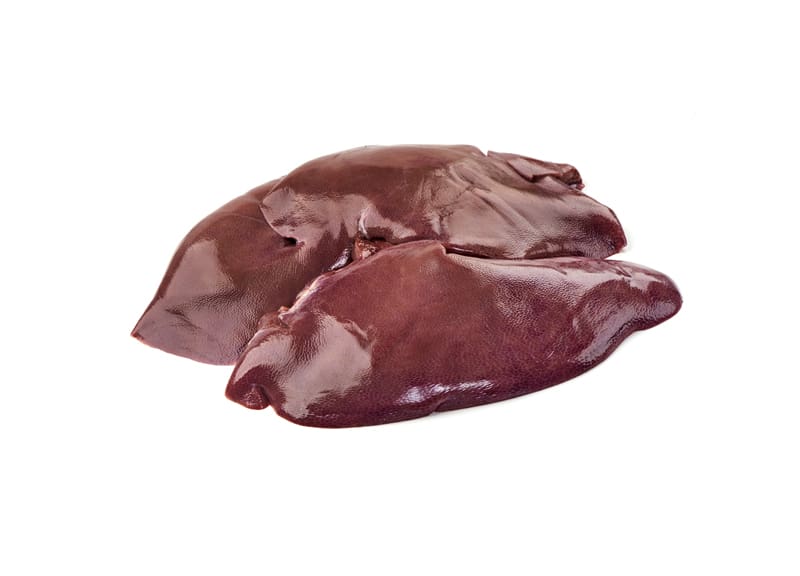
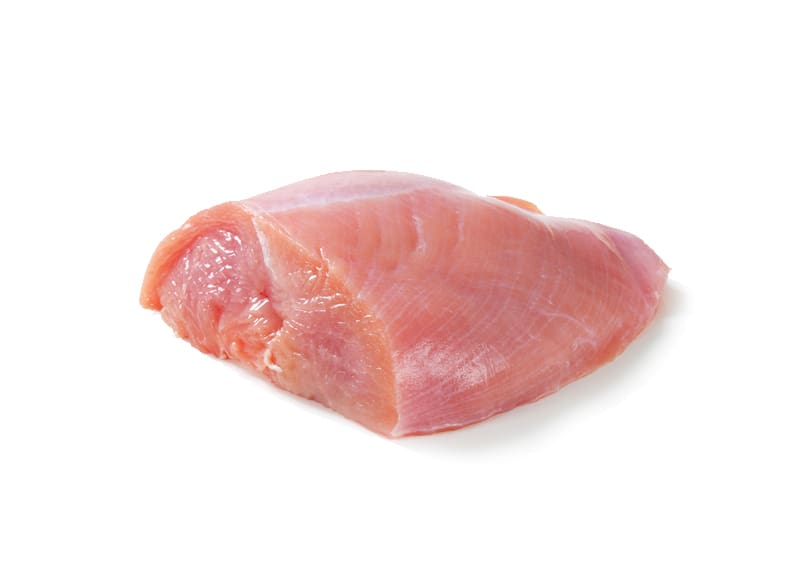
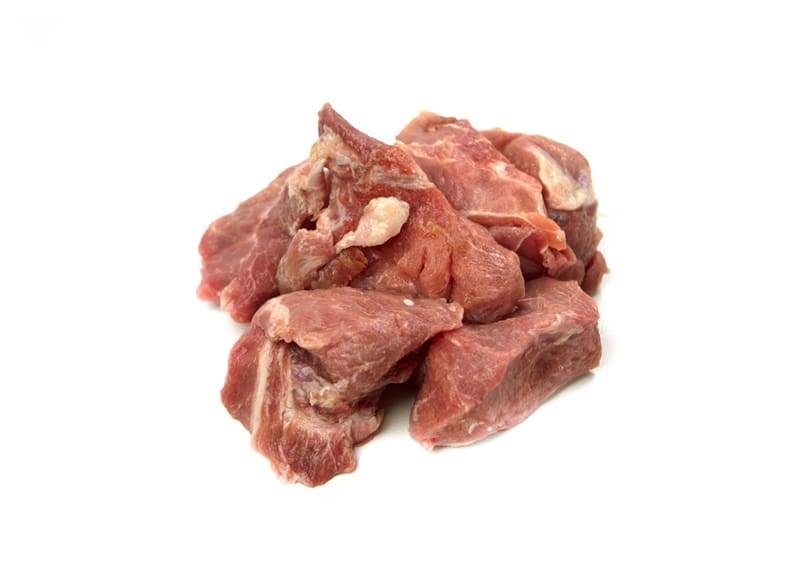
Ensuring the daily recommended allowance for tryptophan is met is important for optimal health. A raw diet that includes quality lean muscle meat and organs should provide a sufficient amount of the tryptophan amino acid.
Tryptophan in Raw Diets
Homemade diets high in dietary fats may be lacking in tryptophan. Therefore, it is recommended to consult with a nutritionist when feeding a high fat or keto diet for long periods of time. It's important to ensure the diet is still providing sufficient levels of this essential nutrient.
Resource Guarding
A raw diet is naturally a high-value resource. This means it is not uncommon to see a display of resource guarding behavior when a dog or cat is fed a raw diet. Not all pets will display this behavior, so this is not to say it will happen in all scenarios. However, resource guarding behavior is often mistaken as the raw diet turning the dog or cat aggressive.
The following behaviors are common with pets who exhibit resource guarding behavior:
Hiding to Eat Food
Running away with food to hide and eat is a mild form of resource guarding. The pet feels that the current environment is not safe enough to eat their food. Hiding in a safe place provides the security to eat their food.
Frantic & Fast Eating
Frantic and excessively fast eating is a behavior often overlooked when discussing resource guarding. This is simply because many pet parents do not associate the speed of eating with resource guarding. However, many pets who exhibit overly fast and frantic eating habits often have resource guarding tendencies. These pets often feel they need to consume the food as fast as possible to prevent the food from being stolen.
Hovering Head or Body Over Food
This trait is often noticed by pet parents when their dog or cat has resource guarding behavior. The pet will hover its body or head over the food in attempts to body block the food resource from all others in the environment.
Growling, Vocalizations, Teeth Baring, & Biting
Growling, Vocalizations, Teeth Baring, & Biting are examples of high level resourcing guarding. Most pet parents easily recognize these behaviors as they are the most obvious form of resource guarding. The pet may exhibit one or more of these at a time.
If a dog or cat exhibits any of the behaviors above with a raw diet, it is crucial to understand the root emotions associated with resource guarding.
“I am worried my delicious raw food will be taken from me!”
Resource guarding behavior lies within the stress associated with losing a valued resource. The feeling of losing a highly valued possession stresses some dogs and cats to the point of visual displays of aggression. The animal feels they must protect the resource based on feeling fearful of losing it. In terms of raw feeding, these pets are protecting the food they find highly valuable.
“I do not trust others around my delicious raw food!”
In addition to feeling anxious about losing the valued resource, there is an underlying feeling of distrust when a pet exhibits resource guarding towards the pet parent. This is regardless of whether the pet parent has any intention of removing the resource from the pet. Additionally, these feelings of distrust can be felt towards other pets within the home.
If a dog or cat displays resource guarding around raw food, this does not mean they cannot eat raw food. Feeding routine adjustments are needed to help improve the behavior and change the mental state of the dog or cat:
Management
When dealing with a dog or cat who displays resource guarding, the first step is to create a feeding routine that does not push the dog or cat to the point where they feel the need to engage in these behaviors. Resource guarding behaviors are inherently reinforcing. Therefore, the more the pet engages in those behaviors, the stronger those behaviors will become over time. If the pet perceives a person as a threat to their meal and their resource guarding behavior causes the threat to leave – they have done their job of protecting their resource and it self reinforces by continuing to eat the delicious raw meal. Establish a feeding routine that works for each pet so they do not show any signs of resource guarding behavior. This usually involves allowing the pet to eat completely alone in a calm and quiet environment.
Training
Once a solid feeding routine has been established to stop the problematic resource guarding behavior from being displayed, a behavior modification training protocol is necessary. This is to help build trust between the pet parent and the pet when it’s raw food is present.
The dog or cat will need to learn that the pet parent’s presence is non threatening. Training can teach the pet that the pet parent is there to provide more valuable resources rather than take away the pet’s possessions.
A qualified dog or cat trainer experienced in positive behavioral modification with resource guarding is highly recommended in these cases due to safety concerns. Resource guarding can escalate to a point where the aggression is not safe and assistance from a professional trainer is warranted.
CLOSING COMMENTS
A raw diet does not inherently make dogs or cats aggressive or “bloodthirsty”. There are several factors to consider when aggressive behavior is displayed when feeding a raw diet. Always rule out medical conditions if the dog or cat shows aggression and ensure the raw diet is sufficient in amino acids to support healthy hormone function.
If a dog or cat is physically healthy and is consuming a diet sufficient in essential amino acids, resource guarding is the likely cause for aggressive behavior. A consistent feeding routine to eliminate the display of resource guarding and behavior modification training program is needed to overcome food aggression.
